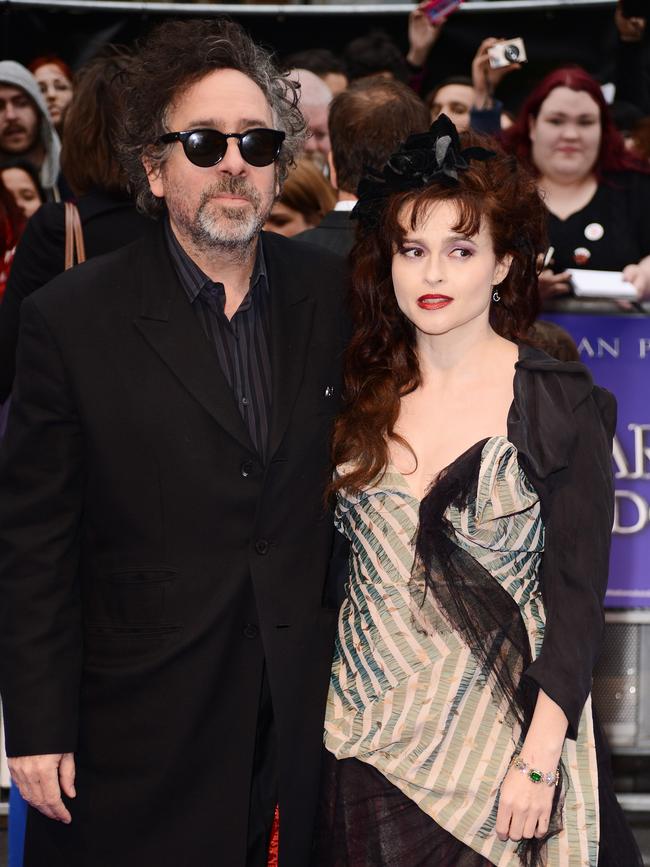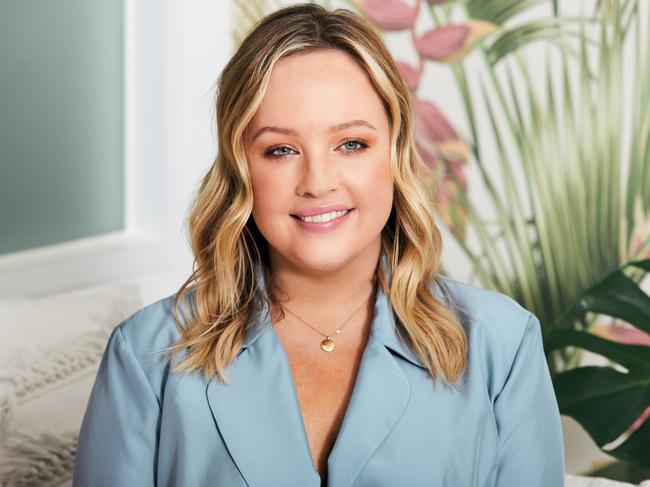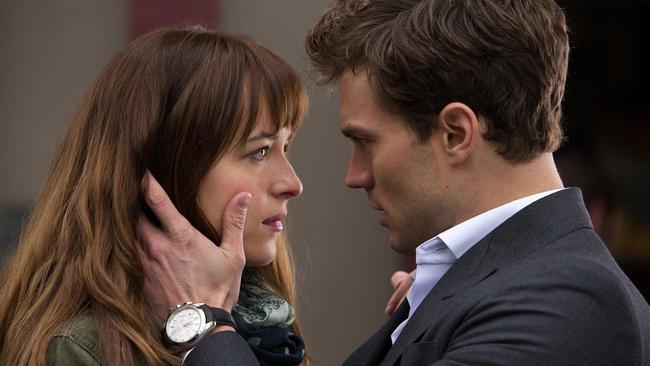Love will come at a price: the costs of future relationships
Everything to do with relationships is getting more expensive, from first dates to fertility treatments.

Less money. More egg freezing. Fewer taboos. More boundaries. And a need for more robots. That’s what the future of love could look and feel like.
Expect more candour, more disclosure, more counselling and more of us to find a mate later in life.
And some partners we may not even meet in reality, instead opting for the “living together but apart” model made famous previously by the likes of Helena Bonham Carter and Tim Burton. The difference will be not having physically seen each other first.
The rise of social media, the proliferation of dating apps and the Covid interruption will continue to have an impact on how we meet, date and fall in love.
Back in 2020, dating platform Hinge conducted research that showed one in three users was open to being in an exclusive relationship with someone they had only “dated virtually” via FaceTime and text messages.

It’s the sort of trend that has inspired a surge in the sex toy industry. And with that uptick in sales has come fresh research and development, with one of the latest gadgets being a waterproof device made specifically for women’s pleasure produced by a German bathware manufacturer.
Tech will continue to find new frontiers and also will be the most trusted wingmen and women for the next generation as they enter the dating pool. But tech can take you only so far.
“People fell in love before there was the internet, and will continue to after it,” relationship guru and one of Australia’s most prolific sexologists, Chantelle Otten, reassures us.
“But for love to flourish, face-to-face meeting will always be critical at least for long-term relationship formation. Other sensual cues are also important, with things like smell and touch being vital to intimacy.”
A growing number of young Australians – Gen Z’s digital natives – is craving this analog approach. These are the people who are struggling with the dopamine crash a “swipe and match” now produces.
The way love has been gamified is starting to grate. Many are taking to TikTok to vent about how modern romance feels more like professional networking.
With ghosting – the act of disappearing without a break-up conversation – persisting, a new apathy is emerging.

People are matching on apps, moving their conversations to other platforms such as Instagram before meeting in person, enjoying a date, then never speaking again.
They want more than “friends with benefits” but are unable, or unwilling, to put in the work offline.
Experts have not been able to pinpoint what is causing this malaise but suggest the coming years could look and sound more like Bill Clinton’s first presidential campaign than Cupid’s playground.
Back in 1992, political strategist James Carville’s catchcry was “the economy, stupid”, to remind political campaigners of the core message. That message rings true now for those on a campaign for love.
Everything is getting more expensive, from first dates to fertility treatments. We’ll be working harder and longer, which will leave less time to play but with the same amount of intensity.
Now, more than ever, it feels like the personal is political. There’s #MeToo and #LetHerSpeak.
We hear more than we need to know from celebrities airing their dirty romantic laundry online. We are all more aware of “red flags” in relationships.
And no one can miss hearing the booming tick-tock of biological clocks as more and more women wait longer to find the perfect partner or skip that step altogether.

Instead of finding “the one”, being OK alone and with oneself is an increasingly common pursuit.
“Self-care is now one of the most popular badge categories on Bumble, surpassing music, film and pets,” Bumble Australia’s Lucille McCart says of the tags clients add to their dating profile to highlight their values and interests.
Katrina Flokis – healer and “lightworker” to some of Australia’s most high-profile celebrities, such as Margot Robbie, and corporate titans – provides a service more are seeking for guidance on how to heal from the past, break bad relationship patterns and lead more fulfilling lives.
So popular is Flokis that her $250 sessions, which include “energy healing” and promote healthy relationships with the self and others, are booked out months in advance.
“The ego is constantly working through a state of change within the masculine and the feminine. Its ultimate purpose is to be loved, accepted and seen. This is why I believe love and relationships always begin with the self. You cannot give what you do not have. Love thyself in order to understand how to love and be loved,” Flokis says.
Speaking of “giving what you don’t have”, for many young people that’s money. It’s not just love, attention and affection that will play a role in future relationships. We may have become more fluid when it comes to gender roles, but liquidity may be the new third wheel. Inflation may trump infatuation. The state of the economy, particularly cost-of-living issues, will take up residence in our love bubbles.
“We will likely continue to find love later,” Otten says. “Due to women’s increasing earning power and the widespread availability of fertility-extending options like egg freezing, we can expect the age for commitment to keep rising. Hopefully these fertility options become more affordable, accessible and normalised in the future.”

Just as topics such as menopause were addressed by government for the first time in the 2023-24 Women’s Budget Statement, fertility treatments may become a policy issue in the coming years.
Australia has an increasingly ageing population. This has been on the radar for years. While it’s great for those searching for love a second or even third time around, it will have a huge impact on young people who are trying to date but have to dash home to change diapers – adult ones.
In 2004, in a bid to address the falling birthrate, treasurer Peter Costello offered up lump sums of $3000 a baby with the “baby bonus” policy. “Have one for Mum, one for Dad, and one for the country,” Costello urged.
Those babies – now almost 19 – soon will be considering their own babies, just with fewer incentives and more uncertainty.
The cost of children, not to mention fertility treatments such as in vitro fertilisation and egg freezing, is a more pressing issue for Gen Z than the cost of childcare. And that’s before taking into account how many cannot afford to buy their own homes without help from the bank of mum and dad.
In September, Stylist magazine published a thought-provoking report into a future that is looking not so much loveless as – alarmingly – childless. “I want you, but I can’t afford you: Are women being priced out of motherhood?” the magazine splashed across a photo of a cherubic baby.
“I simply don’t know if I’ll be able to afford to have a child before my biological clock – that misogynist tyrant – runs out on me,” one woman told the publication.
“The idyllic situation where we own a home and have consistent money coming in probably isn’t going to happen within the years I can physically have a child. Is the answer to just do it, or to just decide not to?”
To remedy this, we’re going to need another Fifty Shades of Grey, as EL James’s blockbuster book sparked the biggest population boom in modern history. And we’re going to need this to supplement (and care for) the overwhelming number of grey nomads.

“No cultural commentator could have predicted that an inexpertly written piece of erotic fiction could have created the biggest baby boom in 40 years,” Gavanndra Hodge wrote in her bestselling memoir, Consequences of Love, in 2012.
Control, although of a different kind to that which Christian Grey wielded back then, is what singles will seek beyond 2024.
“There will be more boundary-setting. Single people are taking control of their dating lives by establishing what does and doesn’t work for them in a connection. Money will also be less of a taboo topic when it comes to finding love, with financial stress continuing to have a profound impact on the dating scene,” Otten says.


To join the conversation, please log in. Don't have an account? Register
Join the conversation, you are commenting as Logout